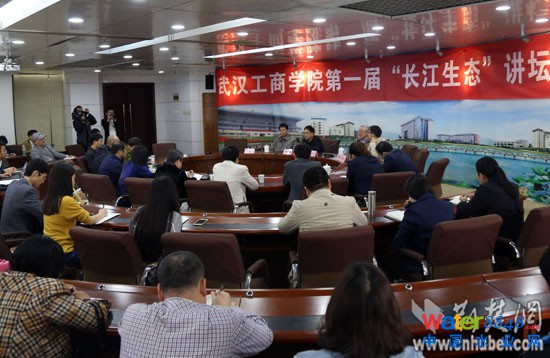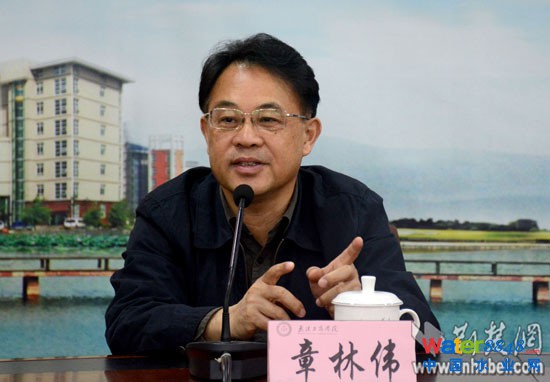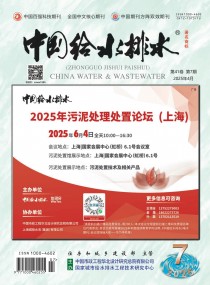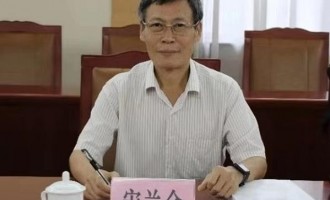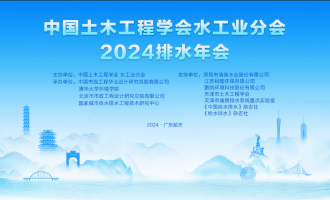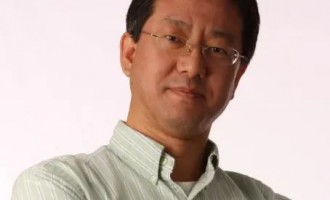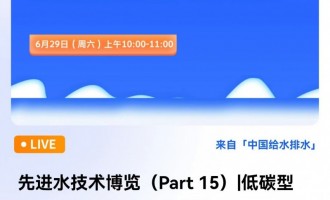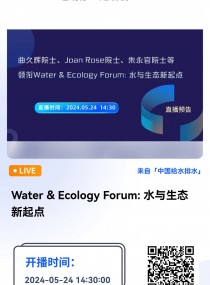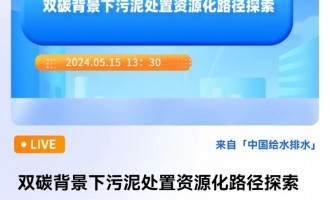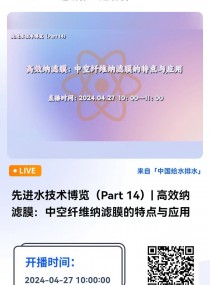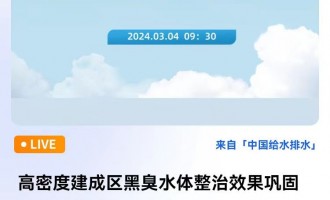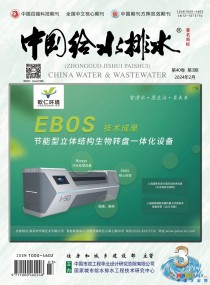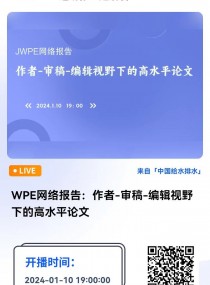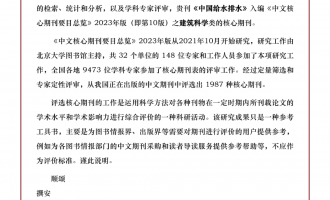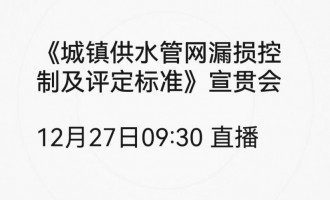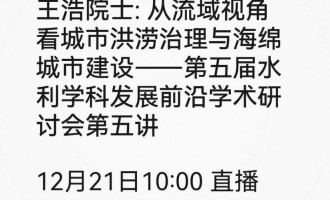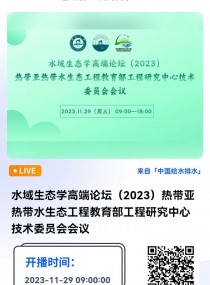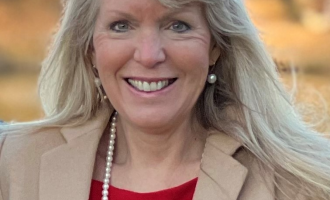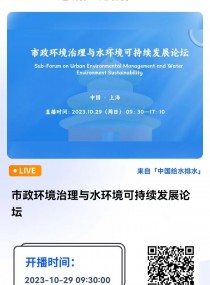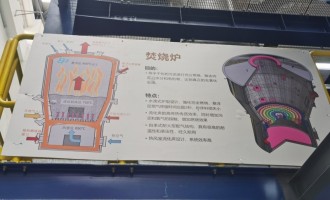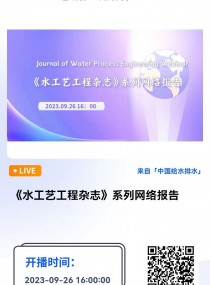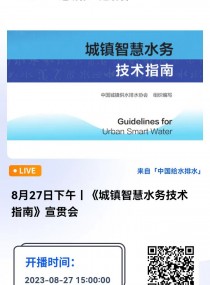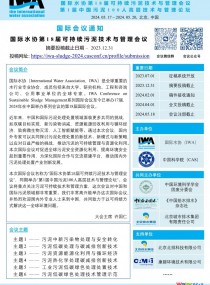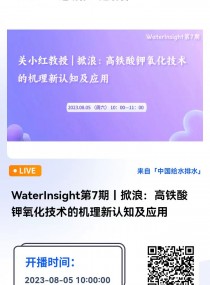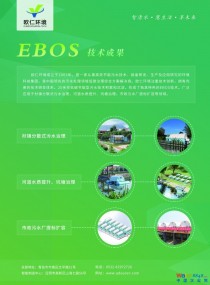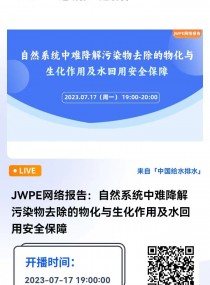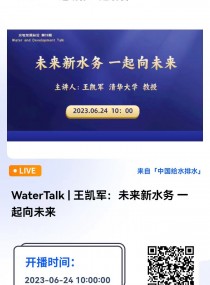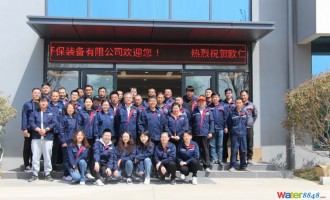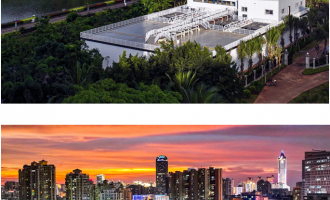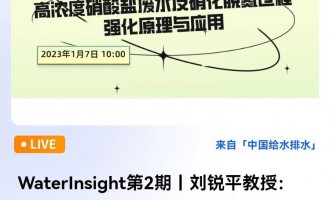建设海绵城市:重新设计洛杉矶应对长期干旱
20世纪40年代工程师们把洛杉矶河变成了一条狭窄的混凝土通道,在1938年的一场洪水摧毁了我们的家园并夺走了100多人的生命之后。
几千年来,城市的规划者们为了让水屈服,设计了各种沟渠。
生命之水4.0的作者David Sedlak说:“这确实是现代水利基础设施的核心。”古罗马人给我们的想法。把水收集到城市郊区的某个地方,我们利用重力将水输送给城市,然后在我们将水处理之后,再通过下水道把它输送到地下或把它送到它该去的地方。
这是大多数城市设计的方式,在洛杉矶你可以听到那古老的管道的祈祷,雨水回应了他们上个月在极度干旱中的祈祷,但是,当雨水从屋顶上滑落下来进入下水道时,那宝贵的水就浪费了。
洛杉矶的一些设计者认为水资源短缺是一个挑战也是一个机会,他们说:一场倾盆大雨应该被收集,把他们变成饮用水和用于浇灌。
但是大多数的时候,这些雨水被驱逐,把他们排到了河里送进了海洋。
如果你跟随一滴雨从天上落到洛杉矶的人行道上,最终你会在洛杉矶河里,这并不是一条真正的河。在十九世纪40年代,工程师把它变成了一个狭窄的混凝土通道。今天,它更像是一个长滩港被清空的一个51英里长的浴缸。
皮艇向导Steve Appleton说:洛杉矶河仅仅只是有一条河的名字而已。
事实上,它是一个防洪通道,这就是为什么在河边标识着禁止任何娱乐。在一场暴雨中,所有的雨水通过下水管道被输送到了这里。
当然,这条河有一次比皮划艇项目更危险,在它被改造成一条混凝土沟渠之前,洛杉矶河随时可能有洪水灾难。并且在1938年,整个城镇都被淹没,有超过100多人丧生。
随着洛杉矶河被混凝土覆盖,Appleton 说:“它稳定了这一不断的威胁。”
城市发展到了河的边缘,在河的洪泛区域内建设。
今天的问题是这个城市需要雨水,不能再像以前一样把雨水送进海洋了。将近80%的加利福尼亚州是极端干旱的。
因此现在有一个呼吁,建设像海绵一样的城市。
Over住在埃尔默大道上,一个工薪阶层社区。城市花了270万美元,在街上铺设透水车道和时尚的耐旱园林绿化。
“我希望所有的区域都像这一样”居民Rick Martin说:“我无法想象他们会为了整个城市花如此多的钱。”
如果他们这么做了Hadley Arnold 会非常喜欢的。Hadley Arnold是干旱地区研究协会的创始人,伯班克伍德伯里大学的一个非营利性组织,致力于研究古罗马人城市建设的想法--尽可能的吸收每一滴雨水。
“在洛杉矶的大部分地区,我们必须将一部分雨水尽快的输送出去”Arnold说:“让他们进入暴雨储水池,不让它流入大海。”
在未来,我们将把水多次利用,我们可能有多个等级的水域
(干旱土地研究协会)
艾尔默大道是个实验性区域,让它渗透下去“把雨水作为一种宝贵资源”Hadley Arnold补充道。
沿人行道是所谓的生态草沟-一个充满耐干旱植物沟。下雨的时候,水收集并过滤到埋在街道下面的水池。
Arnold说:“在一个普通的降雨年份,这个区块为大约30个家庭提供每年所需的水。
干旱土地研究协会要把这个规模扩大,它已经绘制了这一片区域,帮助开发者找到渗水储水最好的地区。
对Arnold来说,这是一个宏伟的城市设计挑战的一部分。她说埃尔默大道上的屋顶是专为雪和冰而设计的,而不是沙漠,他们应该重新设计。
她说:“屋顶像是对着天空张开的大大的嘴巴,屋顶应该是一个杯子或碗,或一把颠倒的伞。”
这项新设计将有助于留住尽可能多的雨水。
她说:水管应该更聪明,这意味着我们不应该用我们能喝的水冲洗厕所。
她说:“在未来,我们应将水多次利用,我们可能有多个等级的水域。”
Arnold想象着整个城市设计,像一块海绵。这是一个计划,可能会惊讶到William Mulholland的工程师,他们策划了加利福尼亚的供水系统。Mulholland城中一个大的罗马风格的喷泉给人们留下深刻的印象
站在喷泉旁边,Arnold想知道一个更干燥的未来的纪念碑是什么样子的。
Arnold说:“我们人类手里的王牌是创新能力,而我认为现在我们面前的最大问题就是我们所做的速度,我们能做得够快吗?”
英文版
Building Sponge City: Redesigning LA For Long-Term Drought
Engineers turned it into a narrow concrete channel in the 1940s, after a flood destroyed homes and left 100 people dead in 1938.
For thousands of years, city planners have engineered water into submission — think aqueducts.
"That's really the core of modern water infrastructure," says David Sedlak, the author of Water 4.0. "It's the ancient idea that the Romans gave us. Collecting water somewhere on the outskirts of the city, sending it with gravity into the city, and then when we're done with it, we put it back underground in a sewer and send on its way."
It's the way most cities are designed. And you can hear the echoes of that ancient plumbing in Los Angeles, where rain answered prayers last month amid an epic drought. But that precious water is wasted when it slides off roofs and into sewers.
Some urban designers in LA see water scarcity as an opportunity. They say a downpour could be captured, turned into drinking water and used for irrigation.
But most of the time, it's banished — sent to a river and out to the ocean.
If you were to follow a drop of rain from the sky and onto an LA sidewalk, eventually you'd end up at the mouth of the Los Angeles River, which isn't really a river. Engineers turned it into a narrow concrete channel in the 1940s. Today, it's more like a 51-mile-long bathtub that empties out at the port of Long Beach.
Kayak guide Steve Appleton says this is a river in name only.
But really, it's a flood-control channel, which is why signs on the river prohibit anything recreational. In a rainstorm, all that runoff from the sewers could surge through the channel.
Of course, this river was once dangerous to more than kayakers. Before it was channelized, the?LA river could flood disastrously. Entire towns were wiped out, and in 1938, more than 100 people died.
With the river caged by concrete, "it stabilized this constant threat," Appleton says.
The city could develop right up to the river's edge, paving over the floodplain in the process.
The problem today is the city needs that rain. It can't afford to just send it out into the ocean anymore. Almost 80 percent of California is in extreme drought. (That's a technical term, just one notch shy of "exceptional" drought.)
And so there's a call now to build cities like sponges.
Over on Elmer Avenue, a working-class neighborhood, the city spent $2.7 million to make over the street with permeable driveways and snazzy drought-tolerant landscaping.
"I'd like all the blocks to look like this," says resident Rick Martin. "I can't imagine they would spend this kind of money for the whole city."
Hadley Arnold would love it if they did. She's the co-founder of the?Arid Lands Institute, a nonprofit based at Woodbury University in Burbank dedicated to the decidedly non-ancient Roman idea that cities should, wherever possible,?soak up every raindrop.
"In most of our neighborhoods in Los Angeles, we are required to send some stormwater off of our properties as fast as possible," Arnold says. "Get it into a storm drain, get it out to sea."
"In the future, we will be using water multiple times, and we will probably have multiple-grade waters."
Hadley Arnold, Arid Lands Institute
Elmer Avenue is an experimental block that soaks it up "to treat it as a precious resource," she adds.
Along each sidewalk is what's called a bioswale — a gully filled with drought-resistant plants. When it rains, the water collects and filters down into cisterns buried below the street.
"In an average rain year, this block puts enough water for approximately 30 families for a year into the ground," Arnold says.
The Arid Lands Institute would like to scale this up. It has mapped the region to help developers find the best spots for water to percolate down.
To Arnold, this is part of a grand urban design challenge. She says the peaked roofs on Elmer Avenue are designed for snow and ice, not the desert, and that they should be redesigned.
"Roofs that are like a wide mouth open to the sky," she says. "Roofs that are like a cup or a bowl, or an umbrella turned upside down."
This new design would help catch as much rain as possible.
And plumbing should be smarter, she says, meaning we should not be flushing our toilets with water we could drink.
"In the future, we will be using water multiple times, and we will probably have multiple-grade waters," she says.
Arnold imagines an entire city designed like this, like a sponge. It's a plan that might have surprised William Mulholland,the engineer who masterminded California's water system. Mulholland is memorialized by the city with a big Roman-style fountain.
Standing by the fountain, Arnold also wonders what the monuments of a much drier future might look like.
"The ace in our species pocket is the ability to innovate," Arnold says. "And I think the single biggest question in front of us right now is the rate at which we do it. Can we do it fast enough, given the urgency?"
来源:中国水工业网
珠海深圳入选第二批海绵城市试点
20世纪40年代工程师们把洛杉矶河变成了一条狭窄的混凝土通道,在1938年的一场洪水摧毁了我们的家园并夺走了100多人的生命之后。
几千年来,城市的规划者们为了让水屈服,设计了各种沟渠。
生命之水4.0的作者David Sedlak说:“这确实是现代水利基础设施的核心。”古罗马人给我们的想法。把水收集到城市郊区的某个地方,我们利用重力将水输送给城市,然后在我们将水处理之后,再通过下水道把它输送到地下或把它送到它该去的地方。
这是大多数城市设计的方式,在洛杉矶你可以听到那古老的管道的祈祷,雨水回应了他们上个月在极度干旱中的祈祷,但是,当雨水从屋顶上滑落下来进入下水道时,那宝贵的水就浪费了。
洛杉矶的一些设计者认为水资源短缺是一个挑战也是一个机会,他们说:一场倾盆大雨应该被收集,把他们变成饮用水和用于浇灌。
但是大多数的时候,这些雨水被驱逐,把他们排到了河里送进了海洋。
如果你跟随一滴雨从天上落到洛杉矶的人行道上,最终你会在洛杉矶河里,这并不是一条真正的河。在十九世纪40年代,工程师把它变成了一个狭窄的混凝土通道。今天,它更像是一个长滩港被清空的一个51英里长的浴缸。
皮艇向导Steve Appleton说:洛杉矶河仅仅只是有一条河的名字而已。
事实上,它是一个防洪通道,这就是为什么在河边标识着禁止任何娱乐。在一场暴雨中,所有的雨水通过下水管道被输送到了这里。
当然,这条河有一次比皮划艇项目更危险,在它被改造成一条混凝土沟渠之前,洛杉矶河随时可能有洪水灾难。并且在1938年,整个城镇都被淹没,有超过100多人丧生。
随着洛杉矶河被混凝土覆盖,Appleton 说:“它稳定了这一不断的威胁。”
城市发展到了河的边缘,在河的洪泛区域内建设。
今天的问题是这个城市需要雨水,不能再像以前一样把雨水送进海洋了。将近80%的加利福尼亚州是极端干旱的。
因此现在有一个呼吁,建设像海绵一样的城市。
Over住在埃尔默大道上,一个工薪阶层社区。城市花了270万美元,在街上铺设透水车道和时尚的耐旱园林绿化。
“我希望所有的区域都像这一样”居民Rick Martin说:“我无法想象他们会为了整个城市花如此多的钱。”
如果他们这么做了Hadley Arnold 会非常喜欢的。Hadley Arnold是干旱地区研究协会的创始人,伯班克伍德伯里大学的一个非营利性组织,致力于研究古罗马人城市建设的想法--尽可能的吸收每一滴雨水。
“在洛杉矶的大部分地区,我们必须将一部分雨水尽快的输送出去”Arnold说:“让他们进入暴雨储水池,不让它流入大海。”
在未来,我们将把水多次利用,我们可能有多个等级的水域
(干旱土地研究协会)
艾尔默大道是个实验性区域,让它渗透下去“把雨水作为一种宝贵资源”Hadley Arnold补充道。
沿人行道是所谓的生态草沟-一个充满耐干旱植物沟。下雨的时候,水收集并过滤到埋在街道下面的水池。
Arnold说:“在一个普通的降雨年份,这个区块为大约30个家庭提供每年所需的水。
干旱土地研究协会要把这个规模扩大,它已经绘制了这一片区域,帮助开发者找到渗水储水最好的地区。
对Arnold来说,这是一个宏伟的城市设计挑战的一部分。她说埃尔默大道上的屋顶是专为雪和冰而设计的,而不是沙漠,他们应该重新设计。
她说:“屋顶像是对着天空张开的大大的嘴巴,屋顶应该是一个杯子或碗,或一把颠倒的伞。”
这项新设计将有助于留住尽可能多的雨水。
她说:水管应该更聪明,这意味着我们不应该用我们能喝的水冲洗厕所。
她说:“在未来,我们应将水多次利用,我们可能有多个等级的水域。”
Arnold想象着整个城市设计,像一块海绵。这是一个计划,可能会惊讶到William Mulholland的工程师,他们策划了加利福尼亚的供水系统。Mulholland城中一个大的罗马风格的喷泉给人们留下深刻的印象
站在喷泉旁边,Arnold想知道一个更干燥的未来的纪念碑是什么样子的。
Arnold说:“我们人类手里的王牌是创新能力,而我认为现在我们面前的最大问题就是我们所做的速度,我们能做得够快吗?”
英文版
Building Sponge City: Redesigning LA For Long-Term Drought
Engineers turned it into a narrow concrete channel in the 1940s, after a flood destroyed homes and left 100 people dead in 1938.
For thousands of years, city planners have engineered water into submission — think aqueducts.
"That's really the core of modern water infrastructure," says David Sedlak, the author of Water 4.0. "It's the ancient idea that the Romans gave us. Collecting water somewhere on the outskirts of the city, sending it with gravity into the city, and then when we're done with it, we put it back underground in a sewer and send on its way."
It's the way most cities are designed. And you can hear the echoes of that ancient plumbing in Los Angeles, where rain answered prayers last month amid an epic drought. But that precious water is wasted when it slides off roofs and into sewers.
Some urban designers in LA see water scarcity as an opportunity. They say a downpour could be captured, turned into drinking water and used for irrigation.
But most of the time, it's banished — sent to a river and out to the ocean.
If you were to follow a drop of rain from the sky and onto an LA sidewalk, eventually you'd end up at the mouth of the Los Angeles River, which isn't really a river. Engineers turned it into a narrow concrete channel in the 1940s. Today, it's more like a 51-mile-long bathtub that empties out at the port of Long Beach.
Kayak guide Steve Appleton says this is a river in name only.
But really, it's a flood-control channel, which is why signs on the river prohibit anything recreational. In a rainstorm, all that runoff from the sewers could surge through the channel.
Of course, this river was once dangerous to more than kayakers. Before it was channelized, the?LA river could flood disastrously. Entire towns were wiped out, and in 1938, more than 100 people died.
With the river caged by concrete, "it stabilized this constant threat," Appleton says.
The city could develop right up to the river's edge, paving over the floodplain in the process.
The problem today is the city needs that rain. It can't afford to just send it out into the ocean anymore. Almost 80 percent of California is in extreme drought. (That's a technical term, just one notch shy of "exceptional" drought.)
And so there's a call now to build cities like sponges.
Over on Elmer Avenue, a working-class neighborhood, the city spent $2.7 million to make over the street with permeable driveways and snazzy drought-tolerant landscaping.
"I'd like all the blocks to look like this," says resident Rick Martin. "I can't imagine they would spend this kind of money for the whole city."
Hadley Arnold would love it if they did. She's the co-founder of the?Arid Lands Institute, a nonprofit based at Woodbury University in Burbank dedicated to the decidedly non-ancient Roman idea that cities should, wherever possible,?soak up every raindrop.
"In most of our neighborhoods in Los Angeles, we are required to send some stormwater off of our properties as fast as possible," Arnold says. "Get it into a storm drain, get it out to sea."
"In the future, we will be using water multiple times, and we will probably have multiple-grade waters."
Hadley Arnold, Arid Lands Institute
Elmer Avenue is an experimental block that soaks it up "to treat it as a precious resource," she adds.
Along each sidewalk is what's called a bioswale — a gully filled with drought-resistant plants. When it rains, the water collects and filters down into cisterns buried below the street.
"In an average rain year, this block puts enough water for approximately 30 families for a year into the ground," Arnold says.
The Arid Lands Institute would like to scale this up. It has mapped the region to help developers find the best spots for water to percolate down.
To Arnold, this is part of a grand urban design challenge. She says the peaked roofs on Elmer Avenue are designed for snow and ice, not the desert, and that they should be redesigned.
"Roofs that are like a wide mouth open to the sky," she says. "Roofs that are like a cup or a bowl, or an umbrella turned upside down."
This new design would help catch as much rain as possible.
And plumbing should be smarter, she says, meaning we should not be flushing our toilets with water we could drink.
"In the future, we will be using water multiple times, and we will probably have multiple-grade waters," she says.
Arnold imagines an entire city designed like this, like a sponge. It's a plan that might have surprised William Mulholland,the engineer who masterminded California's water system. Mulholland is memorialized by the city with a big Roman-style fountain.
Standing by the fountain, Arnold also wonders what the monuments of a much drier future might look like.
"The ace in our species pocket is the ability to innovate," Arnold says. "And I think the single biggest question in front of us right now is the rate at which we do it. Can we do it fast enough, given the urgency?"
来源:中国水工业网
南方日报讯 22日,财政部、住建部、水利部三部门共同组成评审专家组,在中国城市规划设计研究院召开2016年海绵城市试点竞争性评审会议。珠海和深圳在公布的评选结果排序中分别位列第二和第六,双双正式入选第二批海绵城市建设试点,将分别获得中央十多亿元财政补助支持。
据了解,此次共有17个城市参加海绵城市试点竞争性评审,通过参评城市现场答辩,专家现场打分,最终现场公布成绩,结果排序如下:福州、珠海、宁波、玉溪、大连、深圳、上海、庆阳、西宁、三亚、青岛、固原、天津、北京、盘锦、呼和浩特、运城。分数排前14名的城市入选试点城市。
今年3月2日,财政部、住建部、水利部三部门决定启动2016年中央财政支持海绵城市建设试点工作。
3月30日,广东省住建厅联合省财政厅、省水利厅组织技术专家召开评审会,对珠海、佛山、东莞、湛江4市的申报材料进行专家评分,珠海市得分第一,被推荐作为广东省申报2016年中央财政支持海绵城市建设试点。深圳作为计划单列市按文件精神不用参加广东省内竞争,由其自行直接上报财政部、住建部和水利部参加评审。
据悉,此次海绵城市建设试点城市申报成功后,中央财政将对试点城市给予专项资金补助,一定三年,具体补助数额按城市规模分档确定,直辖市每年6亿元,省会城市每年5亿元,其他城市每年4亿元。林郁鸿 范少鹏 李晓虹




